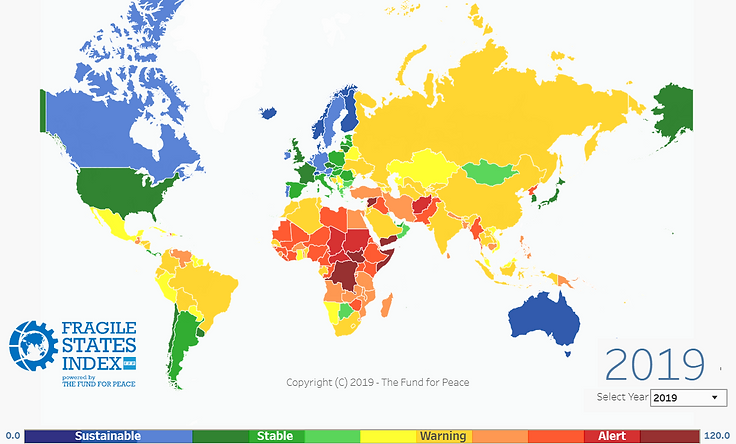WHICH IS THE DIFFERENCE?
GEOGRAPHY
STATE vs "FAILED STATE"
Here we have a very interesting relation between these two concepts which differences could be considered quite abstract due to the varying circumstances that surround each state.
The classification of the states is not clear at all. Instead, we can find that it is a political organization that manages sovereignty in a given territory. That is, in a defined geographically and politically territory, composed by a population, we find a government or administrative system that exercises power or sovereignty by establishing an organization in society to guarantee its proper functioning.
Therefore, the main characteristics of the state are the territory, the population, the sovereign government and as the last ingredient, we find legitimacy or international recognition, which goes hand in hand once the previous characteristics, in most cases, have been acquired. In addition, this last aspect is essential in order to be part of the international community.
As it is mentioned before, there are many different cases and peculiarities within each territory. We can find situations in which criminal and illicit abuses are committed, so as they go against human universal rights, we cannot include them in the international sphere as subjects. Instead, we can find "states" in which population enjoy certain rights, territories governed under the "UN Charter", that accomplish the three main characteristics but they do not get recognition by the international community, in that case, they are not officially considered states. In all of these cases, we talk about "failed states", although more accurately we can refer to that last one case as fragile states. (See the difference between failed, collapse and fragile)
Defining "failed states" is so difficult because there is not a clear and universal classification in which we could embrace them as a whole. Furthermore, there are different levels of fragility or strength. In this kind of state, we can see the lack of a unified, recognized and more or less legal authority over the given territory.
It can be said that a State has "success" if, in the terms of Max Weber, it maintains a monopoly on the legitimate use of force within its borders. In that way, we can list them as the following, although the list of countries below undergoes changes as the years go by and the circumstances change.
In 2019, the 9 least stable countries were:
-
On maximum alert
1. Yemen (-2)
2. Somalia (0)
3. South Sudan (+2)
4. Syria (0)
5. the Democratic Republic of the Congo (-1)
-
In great alert
6. Central African Republic (+1)
7. Chad (-1)
8. Sudan (+1)
9. Afghanistan (0)
Fragile state index in 2019

FEDERAL STATE vs CONFEDERATION OF STATES
After the analysis of the conditions that may appear in order to consider a state or not a political unit, we are now attributing them different competences depending on their territorial and political organization.
States are territorial units that act in the international sphere as active subjects in terms of international law because their actions are considered to have consequences. These units may form a territory in different ways, depending on their form of government or their political and territorial system. We are focussing on the last classification in order to assign the differences between the federal states and the confederation of states.
Federal states: The country we are analyzing is formed by different states in the same territory that make up this form of government, known as federal. It is characterized by being a portion of territory whose inhabitants are governed by their own laws, although they are subject, in certain matters, to the decisions of the central federal power. That is, they are territorially delimited units, that together with other entities, make up a whole state or country.
Examples of national states subdivided into federated states or units are Germany, Argentina, Australia, Austria, Brazil, Burma, United States, India, Malaysia, Mexico, Nigeria and Venezuela (Federal in the constitution, but Regional in practice).
Confederation: It is an international organization formed by a set of states. It is a union of states that retain their sovereignty, although they are governed by certain common laws.
The confederation differs from the federation because in the first one the members maintain high levels of autonomy and the central power is limited, while in the second the federated states renounce to a part of their power giving it to the central power, which is stronger. Frequently, the elements that make up a confederation are in turn federations, and not just territorial units.
The Federation has its own Constitution and forms a single state or actor from the point of view of international law. It is a single legal actor at international level. They have a central government and other local governments subjected to the central power.
The Confederation is based on an international treaty between the member states that conform it. They maintain their sovereignty as states from the point of view of international law. So, they are independent states united together by an international treaty of association.